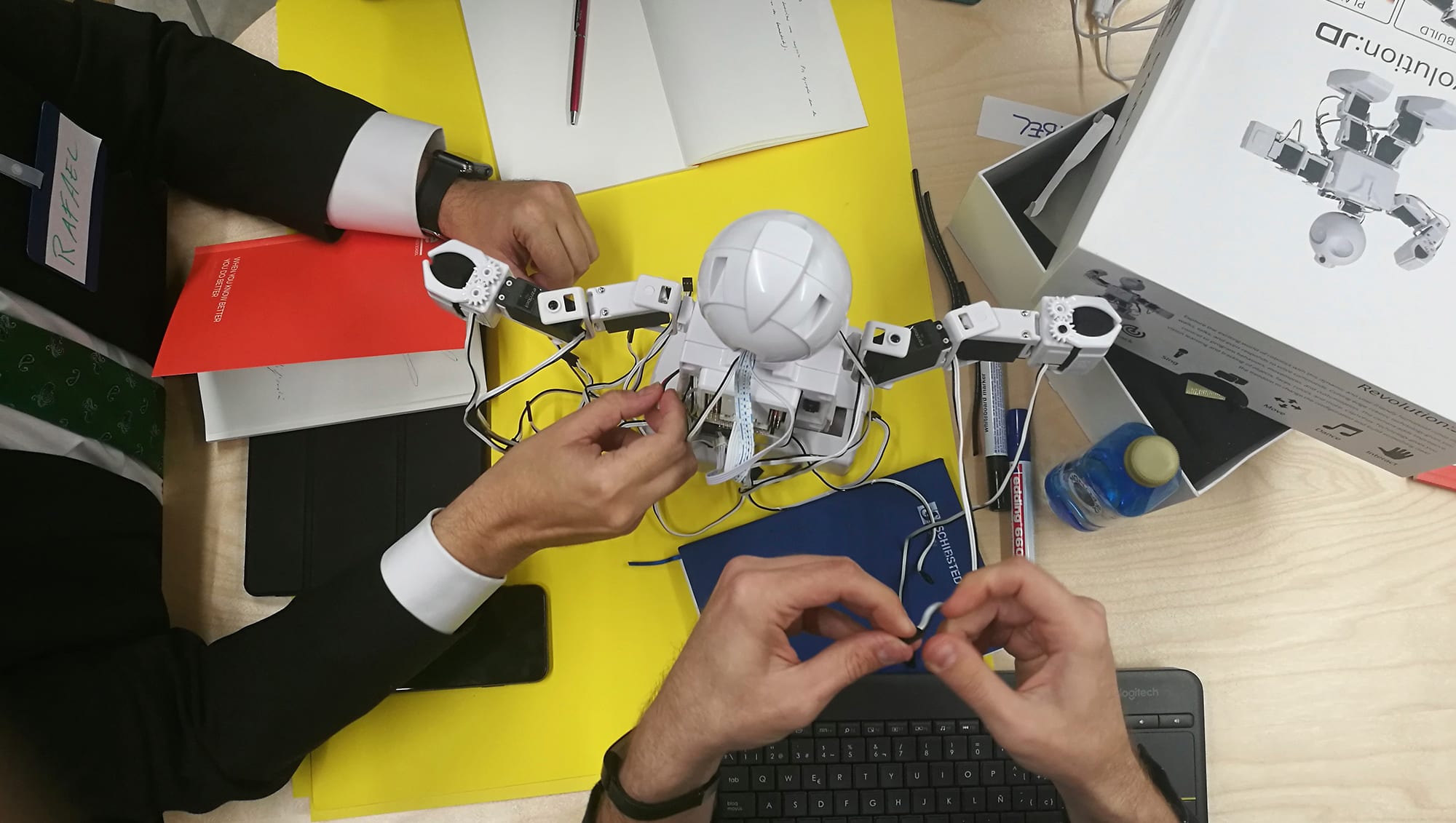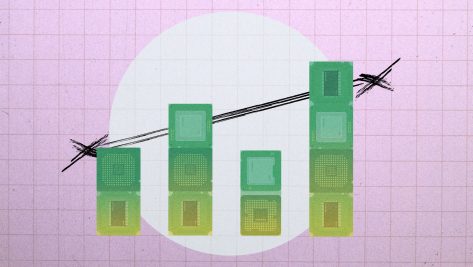Thanks to the growing pace of development, new technologies have gradually been introduced in business settings. In many cases, consumers are actually the ones setting the pace, since they are way ahead of companies in the adoption of these innovations. The important question is how new technologies can be integrated into businesses in a way that creates a marketable value proposition.
This is why it’s a good idea for business leaders to get their hands on the emerging technologies that are poised to have a major impact on business and society. Direct experimentation with new technologies and devices leads to a creative leap. We have seen this clearly at the Digital Playroom, a unique experience that puts executives in contact with technologies and helps them grasp their impact and the role they must play in the digital transformation of processes, experiences, and business models in the short, medium, and long term.
There are two possible approaches to digital transformation: being disruptive or modifying what already exists. Which one should you choose? That depends on your strategy for achieving a true digital transformation and adopting innovations that will have an impact on your business.
Your approach will depend on the specifics of your case. It helps to think in terms of three time horizons associated with different stages and approaches to improving existing businesses:
- H1: current, less than a year; requires incremental talent.
- H2: adjacent, two or three years; combines incremental and disruptive talent.
- H3: new business models; requires disruptive talent.
According to McKinsey, companies need at least five years to reach stage H3, but this vision is surely rather deterministic. Digital transformation requires proper disruption management that combines all three stages as a function of the business’s needs and current status.
Approaching technologies through experimentation and play allows you to discover new business opportunities through new realities.
Touching the future
When executives from various organizations come together to enjoy a virtual-reality experience—using the latest goggles, coupled to their smartphones—they react in various ways, but they all reach the same conclusion: new technologies make qualitative leaps in service provision possible.
The exponential progress of user-friendly interfaces has made it possible to handle increasingly complex situations that combine real and virtual elements—in other words, “mixed reality.” This approach is already gaining currency, for example, in solutions to critical infrastructure problems, complex surgical operations, and many other areas.
New interfaces—highly ergonomic and functional—will continue to proliferate at a growing pace. At the Digital Playroom, participants had the chance to try out a brain-computer interface that measures the activation of various parts of the brain and generates a graphic representation of the user’s cerebral activity. Interfaces of this sort open the door to what science fiction writers might call “mental device control.”
With each passing day, we are growing more accustomed to having different sorts of experiences. Meanwhile, the need to maintain aspects of the physical world in combination with digital innovations is becoming more apparent.
Technological progress underscores the need to move towards new business models. For example, one electrical appliance manufacturer has introduced a pay-per-use scheme for washing machines. Customers make monthly payments based on the number of loads of laundry they do each month. In the event of a technical problem, the company replaces the machine, thereby eliminating the amortization period entirely.
Moreover, the gradual introduction of sensors that can be connected to any device—the “Internet of Things”—is generating new business models, transforming many others from B2C to B2B, and encouraging a shift to platform business models based on core control, where each business must decide whether to be an adjacent or central part of the model.
It’s about understanding how innovations work in a less physical, more virtual world that will have a major impact on business and society.
Dronification and androidization
Approaching technologies through experimentation and play allows you to discover new business opportunities through new realities. One example is the advent of robots and drones.
Building and interacting with a robot is very different from using a drone, thanks to the robot’s human form and pseudoemotional reaction abilities. The trends initiated by these two technological advances—dronification and androidization—will drastically change many sectors in the coming years.
Similarly, there are key differences between interacting with hardware and with software. Our relationship with hardware is relatively simple because we are used to living in a physical world. With software, it’s not quite as simple, so more intuition is required. Interaction with the digital world increasingly requires the development of rapid prototyping and testing capabilities. This new trial-and-error learning model moves extremely quickly because of the large number of variables being managed, but it’s the only way for us to understand how things work.
It’s not just about technology; it’s about understanding how innovations work in a less physical, more virtual world that will have a major impact on business and society. Only through a learning process that combines thinking and doing will we be able to reinvent our business models and develop the new capacities that we need.
© IE Insights.











